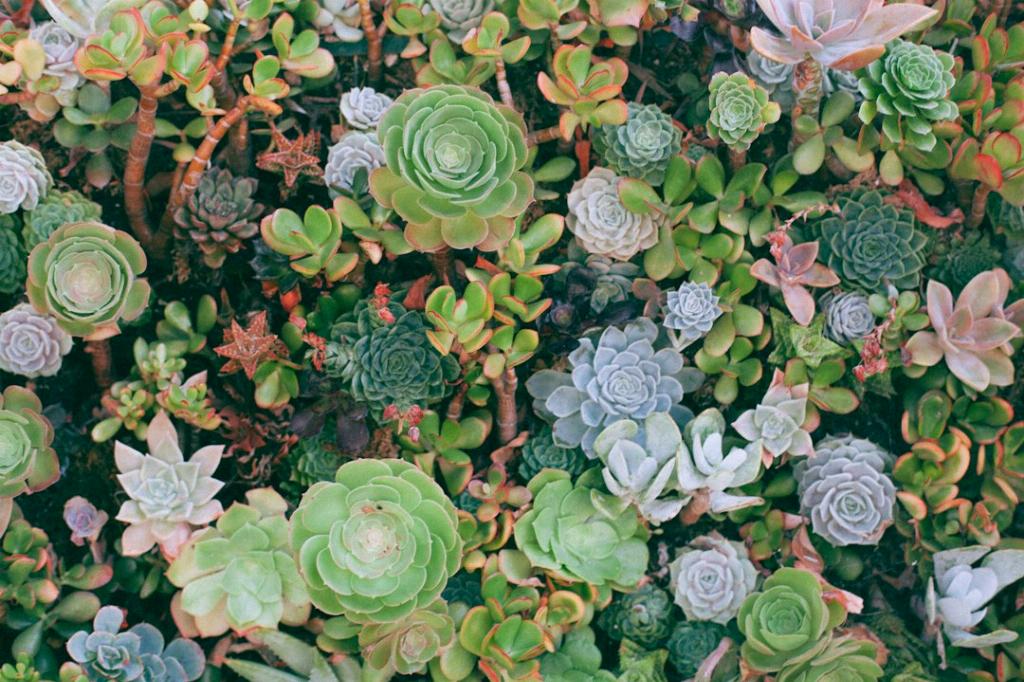When it comes to creating beautiful succulent arrangements, it’s important to choose plant pairings that not only complement each other visually but also thrive together in the same environment. Understanding which succulents can be planted together is key to ensuring that your arrangement remains healthy and vibrant.
Winter Dormant Succulents
For a visually striking arrangement of winter dormant succulents, consider combining varieties such as Agave, Echeveria, and Sempervivum. These succulents not only share similar growth requirements but also create a harmonious display with their contrasting colors and textures.
Summer Dormant Succulents
If you’re looking to create a summer-themed succulent arrangement, opt for succulents like Aeonium, Aloe, Graptopetalum, and Kalanchoe. These summer dormant succulents not only thrive in warmer temperatures but also bring a pop of color and diversity to your arrangement.
Complementary Growth Requirements
When selecting succulents to plant together, it’s essential to consider their individual growth requirements, including sunlight exposure, watering needs, and soil preferences. Pairing succulents with similar care requirements will help ensure that all plants in the arrangement flourish.
Texture and Color Combinations
Creating visual interest in your succulent arrangement involves combining plants with varying textures and colors. Mixing succulents with spiky leaves alongside those with rosettes or rounded shapes can add dimension to your display, while pairing contrasting hues can create a striking focal point.
Height and Growth Habits
Consider the height and growth habits of each succulent when planning your arrangement. Taller succulents, such as Aloe or Agave, can serve as focal points or vertical elements, while trailing varieties like Sedum or String of Pearls can cascade over the edges of a container for a cascading effect.
Grouping by Watering Needs
To simplify maintenance and ensure that each succulent receives adequate watering, group plants with similar moisture requirements together. Drought-tolerant succulents like Echeveria can be paired with other low-water varieties, while plants that prefer more frequent watering, such as Haworthia, can be grouped accordingly.
Creating a Balanced Composition
Balance is key when arranging succulents together. Distribute different shapes, sizes, and colors evenly throughout the container to achieve a visually appealing and harmonious composition. Avoid overcrowding the plants to allow each succulent room to grow and thrive.
Seasonal Considerations
Take into account the seasonal preferences of your succulents when planning your arrangement. Pairing winter dormant varieties with other plants that share the same dormancy period can ensure that all succulents in the arrangement receive the proper care and rest they need to thrive.
Experimenting with Varied Pairings
Don’t be afraid to experiment with different succulent pairings to discover unique combinations that suit your aesthetic preferences. Mixing and matching various varieties can lead to unexpected but delightful arrangements that showcase the beauty and diversity of succulents.
Consider Container Options
The choice of container can also influence the overall look of your succulent arrangement. Opt for containers that complement the colors and textures of the plants, whether it’s a rustic terracotta pot, a sleek ceramic planter, or a hanging basket for trailing succulents.

Final Thoughts on Succulent Pairings
Creating visually appealing succulent arrangements involves thoughtful consideration of plant pairings that not only look great together but also thrive in the same environment. By selecting succulents with complementary growth requirements, textures, colors, and seasonal preferences, you can design stunning displays that enhance any indoor or outdoor space.
